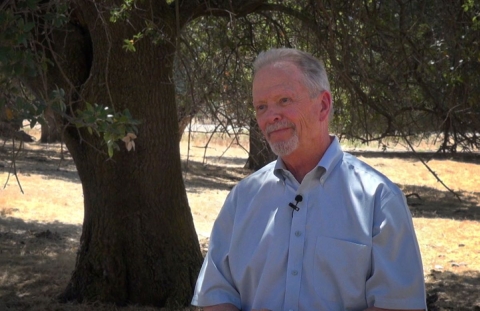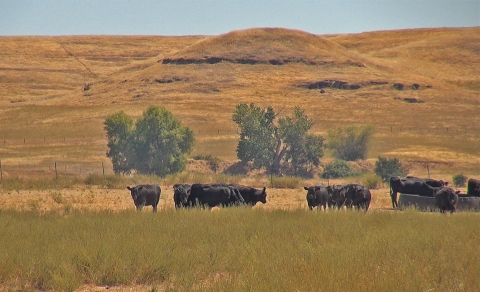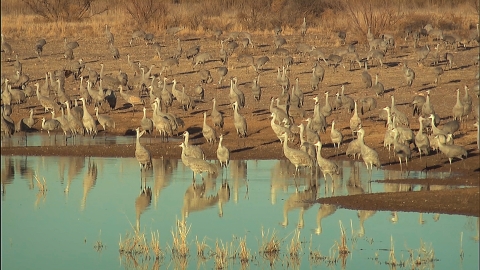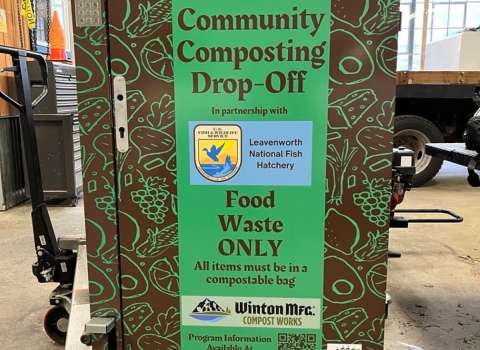The Sacramento area is known for its rich agriculture, beautiful landscapes and growing cities, but finding balance between these attributes has become a challenge. So, county and city planners, the building industry, environmental groups, ranchers, farmers, and state and federal government agencies developed a plan that supports community growth while conserving agricultural lands and open spaces.
The South Sacramento County Habitat Conservation Plan is 317,000 acres in size – about 10 times the size of the city of San Francisco. Stretching from Rancho Cordova to Galt, this plan recognizes key areas where housing and business development have been planned by local jurisdictions to capitalize on existing infrastructure, such as roads and powerlines. It also contains criteria for lands that should be considered to create a 36,000-acre, interconnected preserve system through which wildlife can travel.
“The HCP serves an important purpose of focusing development in the planned urban development area and preserving the open space we’ve all come to enjoy,” said Kim Hudson, executive director of the South Sacramento Conservation Agency, the local agency charged with implementing the plan.
Habitat conservation plans are developed by counties, cities, water districts and other local entities when future development plans could impact species listed as endangered or threatened under the Endangered Species Act. The plans are developed in coordination with the U.S. Fish and Wildlife Service and designed to find solutions to enable development while meeting the needs of listed species.
This plan was driven by Sacramento County, the cities of Rancho Cordova and Galt, the Southeast Regional Connector—a proposed transportation project, and the Sacramento Regional County Sanitation District, the local wastewater treatment agency. While hundreds of Habitat Conservation Plans exist in California, this is the first in the nation to include Clean Water Act permits issued by the Army Corps of Engineers in addition to the Endangered Species Act permits issued by the Service.
“The habitat conservation plan is about good government at the end of the day,” said Mike Jewell, chief of the Army Corps of Engineers’ Regulatory Division in Sacramento. “This is a multi-tiered, multi-agency approach from federal to state to local.”
The traditional process for securing development permits is complicated and requires consulting with multiple federal and state agencies, but this plan brings efficiency to the process.
“Currently, there are five separate state and federal agencies that have permitting actions associated with development activities in this area, and they issue 10 separate permit actions,” said Bill Ziebron, who served as the project manager of the plan, led the workshops and managed all phases of the plan preparation. “Rather than doing those things independently, this HCP creates a coordinated process. In a sense, it’s a new model for environmental permitting.”
The Northern California Building Industry Association supports this streamlined approach. As the Sacramento area continues to grow by approximately 1% every year, meeting the housing demands is challenging.
“The South Sacramento Habitat Conservation Plan creates a one-stop shop for federal permitting, and the main benefit for us is the efficiency,” said Chris Norem, director of Governmental and Public Affairs at the North State Building Industry Association. “The HCP creates a system where we can come in and get permits with regularity and simplicity and understand what those permits are going to cost.”
The plan also provides greater certainty to the agricultural community. Rancher Stan Van Vleck supports the plan’s implementation. A fifth-generation cattle rancher in the Sacramento area, his family’s ranch sits directly across the highway from a large housing development in Rancho Murieta. Agriculture contributes approximately $500 million to the county’s economy each year.
“The HCP is an example of how to make things work,” said Van Vleck. “If we forget about the importance of producing food and fiber from the land, then we’ll have problems.”
The Van Vleck Ranch includes conservation easements, which protect land as open space in perpetuity, while allowing him to continue grazing his cattle.
“Putting land into the HCP is voluntary,” said Van Vleck. “No land will go into this process unless the land owner says ‘I want to do that.’ That was the biggest misnomer we heard, that lands could be taken. That’s not the case. This is people working together to help preserve the environment and keep agriculture going in this region.
The plan area includes wetlands, natural grasslands with vernal pools and oak savannas, all of which support a variety of plant and animal species. It covers 28 species, most of which are wetland dependent, including vernal pool tadpole shrimp, vernal pool fairy shrimp, listed vernal pool plants, California tiger salamander, Giant garter snake and Swainson’s hawk.
“The species in this plan are very compatible with agriculture,” said Jennifer Norris, field supervisor for the Service’s Sacramento field office. Her staff works closely with ranchers and farmers to identify practices that are compatible with the habitat needs. “We need grazing and agriculture to maintain this open landscape.”
Easements support the plan’s goal to create an interconnected set of open spaces, a concept environmental groups advocated for throughout the plan’s development. Sean Wirth, who works with the Sierra Club, the Environmental Council of Sacramento and Save our Sandhill Cranes, was part of the plan’s development and focused on ensuring environmental needs were represented in the plan.
“With this plan, we’ll have a preserve network that works,” he said. “The pieces of land that are conserved will be big enough and interconnected enough that those resources will be secure. The corridors connecting them are essential for animals to move from one area to another.”
Sacramento County Supervisor Don Nottoli has represented the southern portion of the county for 25 years, working alongside residents, farmers and ranchers to ensure their voices and concerns were captured in the final plan.
“This plan provides a vision for how we will look at our landscape and accommodate population growth and agricultural pursuits that are a major contributor to the local economy,” said Nottoli. “The HCP is a strong framework for guiding where development should occur and recognizes that some areas should go undeveloped so nature can thrive.”
Nottoli emphasized that getting everyone in the same room, negotiating the content of the plan and finding compromise was no easy task, but it ultimately resulted in a plan that gave each interest something they wanted.
“Everyone came together for the betterment of our region, for the environment and to keep agriculture going,” said Van Vleck. “We found a fine balance, and that’s not easy.”
Farmers, ranchers, environmentalists, developers and the various government agencies will continue to be engaged in the plan implementation through an implementation review committee.
Fortunately, engagement hasn’t waned over the years that it took to develop this plan. Many are optimistic about the future for south Sacramento with this plan in place.
“Over the next 50 years, we’ll have sensible development in the places that we want it,” said Norris. “At the same time, we’ll preserve the rural character of Sacramento. It’s what makes this part of the world special to a lot of people. Making sure that’s protected is really important.”












